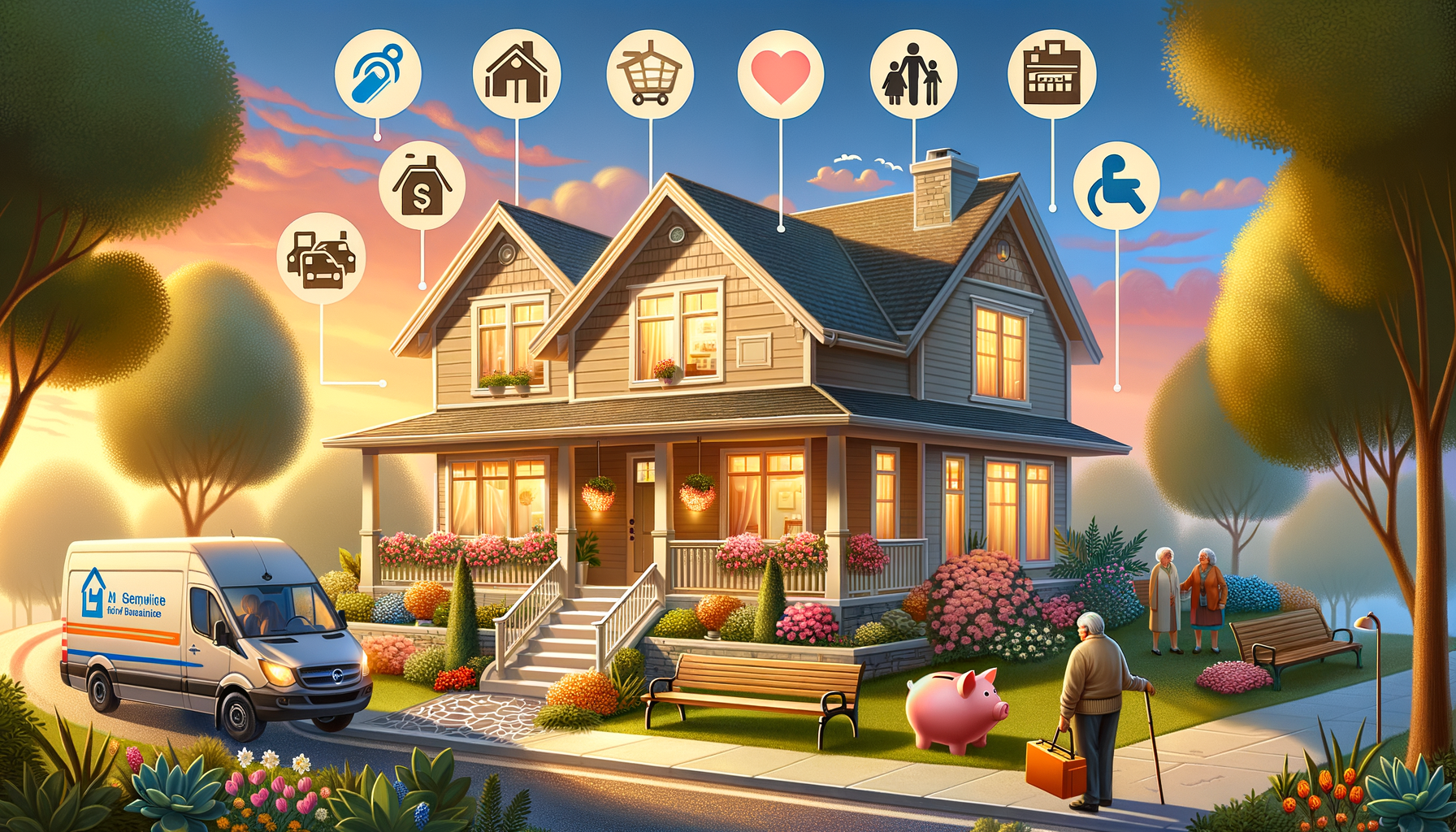“Exploring the Trend of Aging in Place: Influences of High Costs and Emotional Attachments”

In recent years, a significant trend is surfacing across the senior demographic in the United States– an overwhelming desire to remain at home as they move into their golden years. Seniors are no longer enamored with the concept of retiring into specialized, community-focused accommodations such as assisted living homes or retirement facilities. Instead, they want to spend the duration of their lives in the comfort of their own homes, where they have lived, loved, and built decades-long memories. This shift, captured in the term ‘aging in place,’ is driven primarily due to rising costs and the emotional appeal of home.
The high price points attached to moving to care facilities are sufficient in discouraging many seniors from doing so. Assisted living communities, for instance, can become rather hefty financial burdens. The cost standards vary across the country, reaching well into thousands of dollars per month. When you factor in the often-necessary, additional nursing care, the overall cost could be crippling. These costs often come on top of already strained finances caused by medical care and living expenses, making the choice of staying at home much more attractive.
Moreover, the home represents far more than a physical structure. It serves as an emotional anchor and is characteristic of personal independence. It is a tangible monument to their history, encapsulating milestones, human connections, and experiences. Therefore, it’s no surprise that the idea of leaving it behind can be unsettling for many.
As more and more seniors are choosing to stay put, the demand for modifications to enhance the safety and comfort of their homes has significantly risen. Home healthcare equipment, accessibility modifications, and safety-related adjustments are proving to be vital investments for those choosing this lifestyle. Such initiatives allow for their living conditions to adapt to their changing needs, maintaining their quality of life.
The gradual societal shift has also led to the introduction of myriad private and public programs aimed at supporting the ‘aging in place’ concept. Insurance companies are now offering policies that help cover the cost of in-home care and house modifications. They acknowledge the financial strain of lifelong medical care and understand the emotional ties homeowners have to their homes.
This idea of aging at home isn’t just an American phenomenon; it’s a trend seen worldwide. In Japan, where the senior population percentage exceeds that of any other country, there’s a significant emphasis on aging in place. The Japanese government has formalized a comprehensive social service system that prioritizes in-home healthcare. This system encourages and invests in technology and services that allow an older person to live independently for as long as possible.
Similarly, in Europe, initiatives like the European Innovation Partnership on Active and Healthy Aging (EIP on AHA) aim to increase the average healthy lifespan by two years by 2020. The group creates digital innovation to address the challenges of aging in place, including the development of wearable devices for monitoring health conditions.
In the United States, initiatives like the Village Movement connect the elderly populations in communities to resources and social support structures to ensure they can safely remain in their homes. The system works by providing older adults in a locality access to transportation, health and wellness programs, home repairs, and social and educational activities.
These shifts in societal perception regarding senior care reflect a maturing global attitude, one that recognizes the importance of preserving the dignity and independence of older adults. Aging is an inevitable part of life, but how, where, and in which manner it happens can be a matter of personal choice and preference.
There are, however, challenges that accompany the choice of aging in place. For one, not every home is designed with accessibility in mind. Retrofitting a house to make it senior-friendly can be a costly and time-consuming task, especially for those built several decades ago. Ensuring ease of mobility, safety, and accessibility can involve installing railings, ramps, medical alert systems, and other safety measures which can add to costs.
Social isolation is another critical concern. If seniors live alone without regular family visits or social interaction, it can lead to loneliness, depression, and potentially contribute to cognitive decline. Thus, community participation programs, support groups, and the use of technology for connectivity become integral elements in addressing this risk.
Despite the challenges, the appeal of living in familiar surroundings, maintaining autonomy, and preserving personal connections seem to outweigh the negatives for most seniors when weighing their living options. The idea is reinforced with the continued advancements in home healthcare services and technology.
The increasing trend of aging in place shows no signs of slowing down, and it appears that with time, it is a movement that will only gain momentum. Society will likely continue to adapt and offer solutions that meet the growing demand for in-home senior care. With appropriate support, resources, and innovative solutions, the possibility of seniors leading an independent, dignified, and fulfilling life in their homes appears achievable.
In truth, aging in place transforms the narrative of aging from one of inevitable decline and loss to one of empowerment and insistence on maintaining personal choice. This approach respects and supports an individual’s unique journey through older adulthood, and it speaks volumes to the human desire for familiarity, continuity, and dignity. As society progresses, we must strive to nourish this trend, providing our seniors with a living experience that is not just endurable, but enjoyable, safe, and fulfilling.
